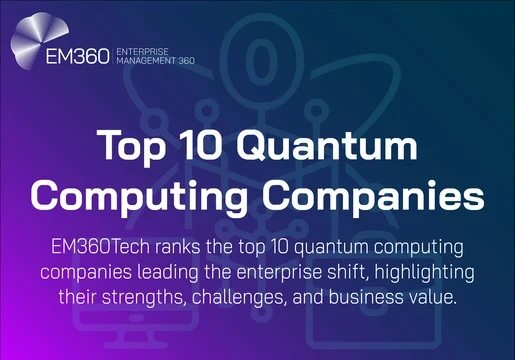In today’s competitive labor market, the combination of economic pressures and rising rates of burnout is causing many employees to re-evaluate their relationship to work. At the same time, new workplace technological capabilities have accelerated the need to deliver seamless experiences to employees from hire to retire, supportive of day-to-day activities while offering a consumer-grade service that retains the best talent.
Today, enterprise service management (ESM) goes well beyond IT. It transforms employer offerings by digitizing and automating adjacent functions like HR, security, finance, and customer relationship management (CRM), putting the focus on a truly end-to-end journey. The total employee experience must be seamlessly connected, convenient, engaging, and unified; the age of siloed IT is over, and ESM is an essential component of any modern organization.

Employee satisfaction matters
Research from Gallup has found that as much as 70% of the current workforce are “not engaged” or are “disengaged” with their work, echoing our own study which found that only 28% of non-supervisory employees are satisfied at work today. At the same time, remote working has accelerated employee understanding of and capabilities using hybrid working technologies: according to Gartner, one in five workers considers themselves to be digital technology experts since Covid-19.
If employee experience can be innovated and improved by gaining a nuanced understanding of their needs and preferences, productivity can be maintained, and organisations can nurture better-fitting employee experiences. So to retain the best talent, it is vital that organizations start recognising that people are their greatest assets.
Improving experiences with ESM
Increasing workplace fluidity is essential for the future of work and investing in an ESM platform is an effective way of doing it. By digitising and automating functions such as HR, security, finance, and customer relationship management (CRM), employers will enhance the ease of internal operations to unify all teams and streamline workflows.
Too often, employees face unnecessary hurdles and complexities with seemingly simple requests. This can be anything from finding the right financial paperwork, requesting new equipment, or solving tech and IT issues. Having to coordinate everyday tasks across fragmented departments soon becomes a time-consuming effort.
Overcoming such stumbling blocks can not only impact worker productivity and reduce operational effectiveness, but also creates a negative impression on employees that could affect their overall perception of the company. Fortunately, this is where efficient ESM can come into play.
ESM done right can minimize workplace silos and automate workflows so that the employee experience is as frictionless as possible. For example, the energy and utility sector used ESM to power a central hub for employee interaction, where employees can submit requests and inquiries from payroll, staffing, and resource management. There are also possibilities for employers to track employees’ experience and improve the system based on their inputs.
The number of systems and technologies involved in today’s workplace can feel overwhelming, but to deliver holistic and sustainable employee experiences, leaders need to think beyond traditional HR and IT boundaries.
Delivering for employees also means delivering for customers
Far too often organizations involve multiple teams in common everyday tasks without streamlined processes for effective cross-collaboration, leaving employees overworked and unable to respond fast enough to critical areas of the business. At the other end of the spectrum, end users are often waiting a long time for issues to be resolved because technical teams are backlogged with too many requests.
ESM can be used to speed up such requests, for example, in modernizing clinical trials. As part of a clinical trial for Pfizer’s COVID-19 vaccine, clients within the healthcare sector had to enrol thousands of patients ahead of the trial launch in under a month’s time. By using the ServiceNow NOW platform, they were able to develop and implement the tools to provide the best support to agents. This meant adding multi-channel solutions including phone, chat, email, a self-service portal, and mobile accessibility to coordinate communication from different sites whilst ensuring the quality of service was maintained for patients.
Organizations choosing to incorporate ESM platforms that prioritize and support a more robust customer experience will not only create a streamlined workflow to help their employees do their jobs better but will stand to benefit from improving day-to-day operations across the business.
Integrating ESM across different platforms
Having a fully integrated ESM platform in place is one thing, knowing how to use it effectively and tapping into all its potential is something that requires a constructive approach from a knowledgeable, dependable partner.
ESM has the potential to be an invaluable platform to help employees’ workloads by streamlining tasks and reducing burnout. The beauty of ESM is that it can boost productivity, support hybrid working, and bring different work departments together so that organisations can craft a more sustainable employee experience.
To transform sustainably and maximize value during rapid digital transformation, organizations must be able to optimize their workflows by connecting disparate enterprise systems into integrated seamless experiences. The time to transform is now.







Comments ( 1 )
Barry Flack
02/02/2023